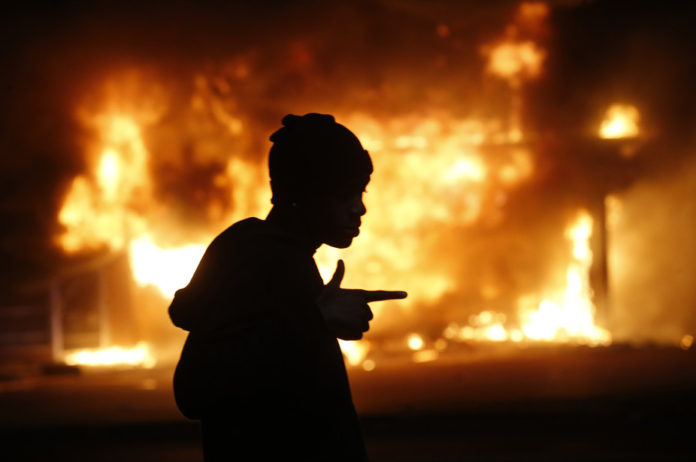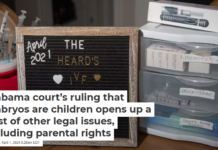
By June Cross, Columbia University
Before the ambulance even came to collect the body of 18 year-old Michael Brown from the streets of Ferguson, it was clear that this case would be tried in the court of public opinion. Was Brown a “gentle giant” or a common thief? Had he attacked a police officer who had never before shot anyone, or been shot down by an intimidated cop before he had a chance to surrender?
Three separate autopsies agreed that Brown could have survived five shots, but not the one to his head that killed him. Was he surrendering, or charging a cop who was shooting at him? By the time Saint Louis County Prosecutor Robert McCulloch walked to the podium, in the middle of Monday night prime time television, to announce that a grand jury had decided there was no reason to blame Darren Wilson, it was clear that this case would not resolve as easily as an episode of “Law and Order.”
“The most significant challenge encountered in this investigation,” McCulloch said, “has been the 24-hour news cycle and its insatiable appetite for something – for anything – to talk about.”
That cycle is increasingly fed by social media, and in the last several days the back and forth had reached a fever pitch. But McCulloch’s statement belies the fact that both law enforcement supporters and civil rights advocates spread disinformation, while in the days leading up to the grand jury announcement, cable news networks used that online debate to fuel ratings.
Indeed a close examination of the Brown case reveals the growing interactivity among media, and how any given photograph or video can both reveal, yet conceal context. It is helpful to go back to the beginning.
Let’s start at the beginning
Reporting the story on August 10, the day after the shooting, NBC News used a photo of an unsmiling Brown flashing either a peace sign or a gang sign, depending on your point of view. That gave rise to a meme, #IfTheyGunnedMeDown, in which black men showed pictures of themselves as family men and in “Thug” poses, questioning which the media would use.
Two days later, Don Lemmon on CNN interviewed Brown’s parents. Brown’s mother called him “a gentle giant,” intimidating at 6’4” and 300 pounds, but not a fighter. Then, a week later, when Ferguson Police chief Thomas Jackson finally identified as Darren Wilson, he simultaneously gave FOX News a video that immediately went viral on You Tube. It showed a man, apparently Brown who appeared to be stealing a handful of cigars and pushing the owner of the store out of the way as he walked out the door.
That narrative, of a thief being chased by an outstanding cop, would frame the story and eventually led to Wilson’s exoneration. This week, the story belongs to the cop who was trying his best to save his own life. But throughout, there have been so many competing narratives that no one entity seemed capable of sorting them out.
Mistakes were made on both sides
Anonymous, a group of hackers who operate under one Twitter handle, posted a picture of a policeman who didn’t even work in Missouri. A picture of a woman who was identified as Wilson’s wife was “overheard” complaining about the way “feral black Americans kill themselves and each other, then claim they’re the victims. What insanity is that?” Although Wilson wasn’t even married at the time, that alleged exchange was seized by Wilson supporters to justify his actions, along with a picture of someone who resembled the officer lying in bed with a fractured orbital socket “beaten to a bloody pulp.” That picture helped Wilson raise $500,000 on GoFundMe (a similar fund, set up by supporters of Brown, raised only about $300K).
As cable news parsed out these debates, they seemed to spend more resources stoking ratings than informed analysis. The nadir was probably the on-air debate Tuesday night between CNN’s Don Lemmon and contributor Van Jones. They were both tear-gassed at the same march, but couldn’t agree whether it had been “peaceful protestors” or whether any “leaders” had been present.
Prosecutors jumped in on both sides, second guessing McCulloch’s decision to dump all the evidence into the grand jury’s lap, instead of parsing it themselves. The Washington Post did an analysis the hewed closely to the prosecutor’s report, while The Guardian parsed the subtext. The latter, I would argue, helped readers better understand the story.
A viewer would be well-advised to explore The News Literacy Project, which has posted a series of misinformation about Ferguson along with some tips for those trying to sort fact from fiction. They include examining the sources for news stories, cross-referencing stories, and noting the disparities.
Anyone who does will discover that the truth is slippery and ephemeral, and that even forensic evidence conceals the motivation of the actors.
![]()
This article was originally published on The Conversation.
Read the original article.




















